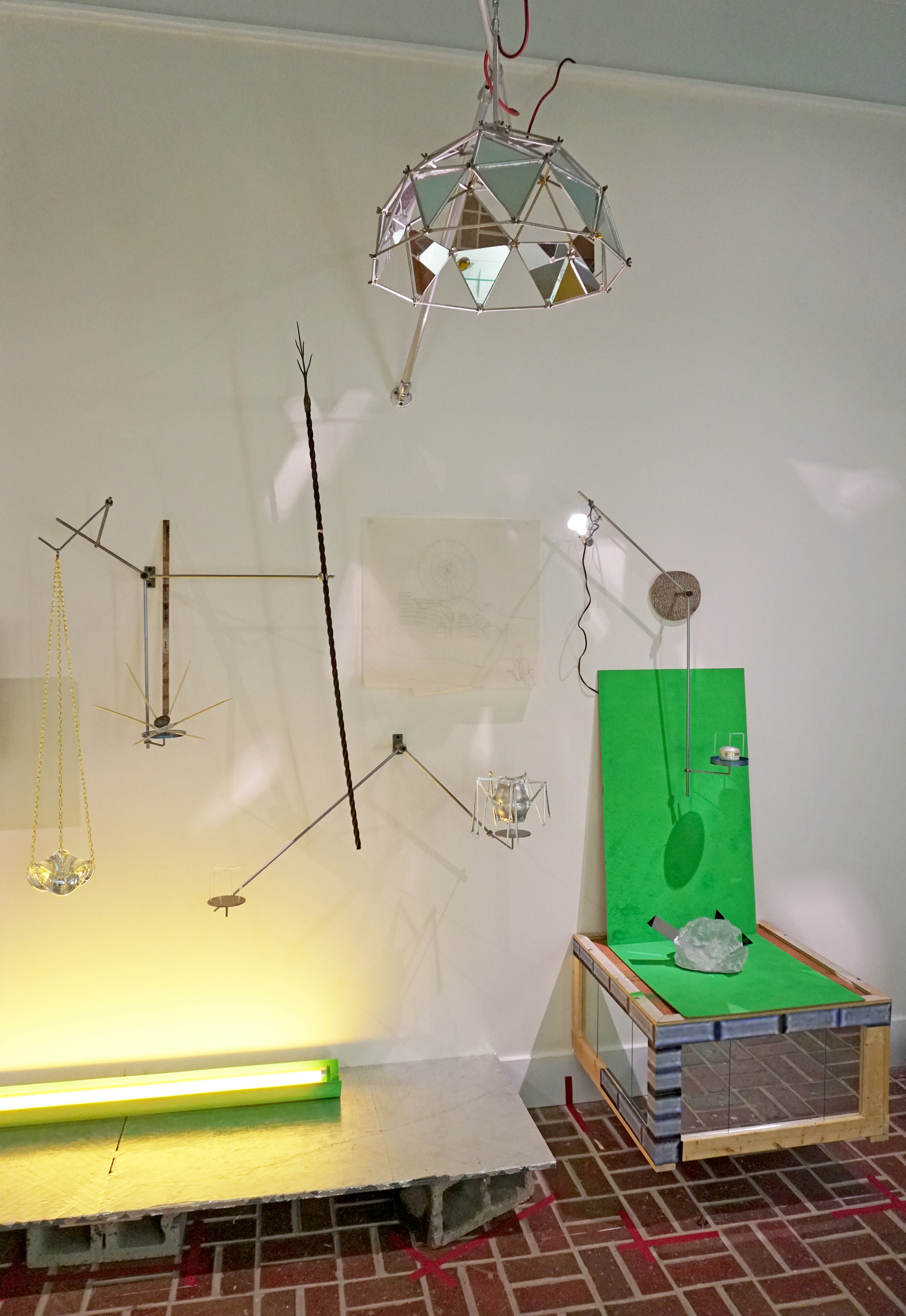Installation views from Symbiotic Spheres: The Interlocking Worlds of Glass, Science and Art
April 2018 - January 2019, Museum of American Glass, Millville, NJ
This series of improbable inventions and mysterious video sequences examines our understanding of survivalist techniques and isolationist ideologies. By probing the decreasing value placed on self-sufficiency in contemporary culture, this installation harkens back to earlier DIY movements and draws inspiration from polymathic thinkers such as the inventor Buckminster Fuller.
“Science fiction deals with improbable possibilities, fantasy with plausible impossibilities".
- Miriam Allen deFord (1)
R. Buckminster Fuller (1895-1983) was an architect, systems theorist, designer and inventor. He described himself as a poet, meaning a person who puts things together in an era of great specialization, when most are differentiating or taking things apart. Fuller claimed to have had a transcendental experience where he heard a voice speaking while his body was floating in a sphere of white light. After this epiphany at age 32, he resolved to devote the rest of his life to “an experiment, to find what a single individual could contribute to changing the world and benefiting all humanity.” (2)
Fuller is perhaps most well known for popularizing geodesic structures, a design based on finding the shortest possible lines between individual points on a sphere. His interest in this system was driven by a desire to cover the greatest amount of space with the smallest amount of resources. The geodesic form derived its strength and simplicity from patterns observed in the natural world instead of conventional construction knowledge, and has become a symbol for the importance of alternative ideas. Buckminster Fuller’s project sought to reformulate humanity’s central problems in entirely new ways, to propose a technological version of the future built on empathy rather than cold abstraction. He cultivated a vision that insisted on thinking independently, focused on integration in place of specialization, rejected established rules and methods, and aspired to realize improbable possibilities.
1 Borrowed from Ward Shelley’s The History of Science Fiction flowchart
2 "Design – A Three-Wheel Dream That Died at Takeoff – "Buckminster Fuller and the Dymaxion Car". New York Times. June 15, 2008.


